Igneous and metamorphic petrology Chapter 1
1/43
There's no tags or description
Looks like no tags are added yet.
Name | Mastery | Learn | Test | Matching | Spaced |
|---|
No study sessions yet.
44 Terms
Rock Classification: Igneous rocks
Based on Composition (mineralogic or
chemical) and Texture
Rock classification based on conditions of magma cooling: (P,T,t)
Volcanic-characterized by an aphanitic or fragmental (pyroclastic) texture
Plutonic-characterized by a phaneritic texture
Hypabyssal-(in between..can be aphanitic or v.
fine grained phaneritic)
Rock classification based on specific chemical characteristics (X)
(major elements primarily, however, trace elements and isotopes are important and can be related to sources / plate tectonics)
Rock classification based on Composition (mineralogic or chemical)
• Basic Compositional Terms:
-Ultramafic
-(from Magnesium and Ferric Iron),
-Intermediate
-Felsic (rich in feldspar and silica)...
• generally can also be related to silica (SiO2) or magnesium (MgO) contents
Rock = Phases (minerals + glass [melt] + volatiles)
Phases determined by P, T, X, volatiles
What is Earth Made of?
• The Earth’s composition largely reflects its position in the solar system at the time of its formation.
• ~30% Iron,
~30% oxygen,
~15% silicon,
~15% Magnesium,
~10% the other 88 naturally occurring elements
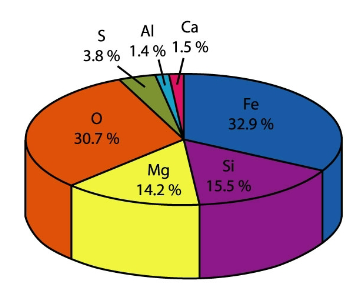
Geochemical affinity
Elements are divided according to how they partition between coexisting silicate liquid, sulfide liquid, metallic liquid, and gas phase

Chemical Differentiation of Earth
• Lithophile elements (stone-loving)- silicates
• Chalcophile elements (Cu/S-loving)-sulfides
• Siderophile elements (Fe-loving)- metallic phase
• Atmophile elements (hydrophile)- oceans and atmosphere
• Where the elements wound up in Earth related to charge balance/size and excess elements after bonding (incompatible elements)
Differentiation of Earth
-Early Earth was mostly molten (“liquid rock”)
-More dense material pulled by gravity to the center of earth
-less dense feldspar mineral formed soldi crust
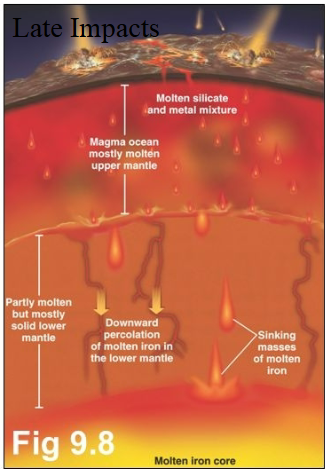
Formation of Earth’s Layered Structure
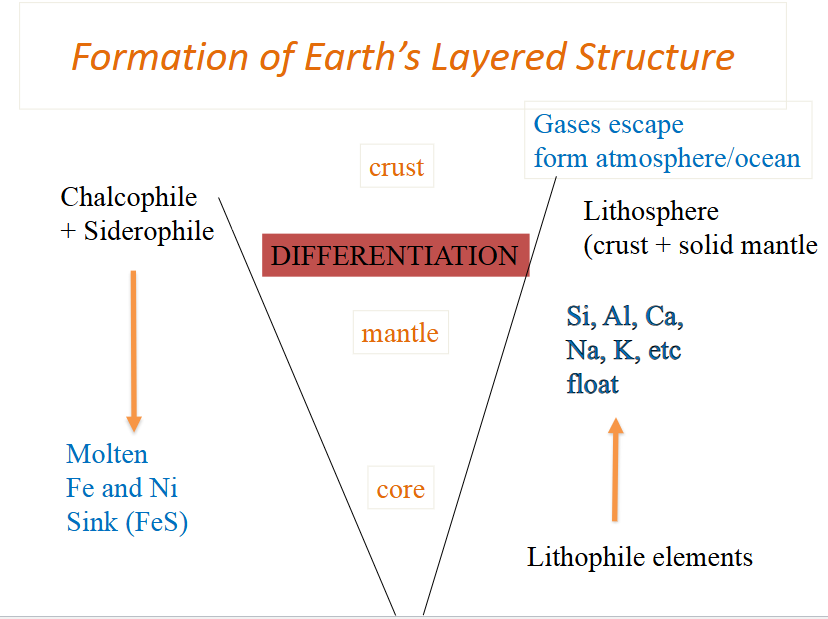
Chemical Differentiation of Earth
(by a variety of processes)
Differentiation not perfect....different element groups can be found in all layers – but variable concentrations
Initial molten Earth
Core ~ siderophile and chalcophile
Mantle/crust ~ lithophile and chalcophile
Continental Crust and oceans and atmosphere formed later and continue to evolve

Seismic structure of Earth
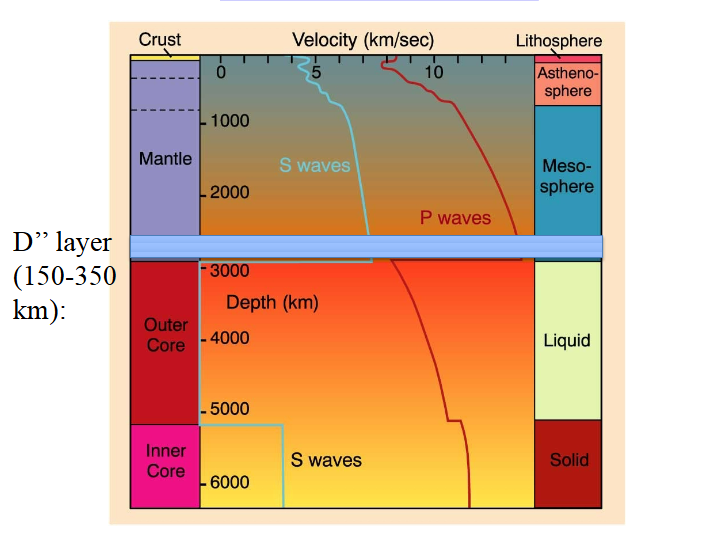
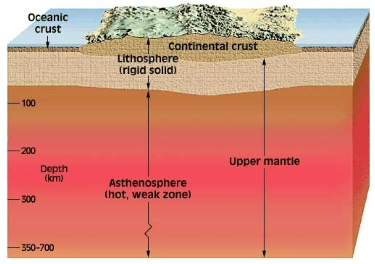
What composes the interior of Earth?
• The crust-mantle boundary (Moho) displays a sharp discontinuity in seismic velocity where mafic to felsic igneous and metamorphic crustal rocks are underlain by mantle peridotite (ultramafic).
• The low-velocity zone (~60 - 220 km depth) is evidence that part of the upper mantle is less rigid and may be partly molten. This is the top of the upper mantle,
below the rigid lithosphere (crust and upper mantle).
oceanic crust:
Thin: 6 -10 km (seismic data, samples, drilling)
ophiolite suite: Ophiolites are fragments of the Earth's oceanic crust and
upper mantle that have been exposed on the surface, often on top of continental crust
Oceanic crust is composed mainly of mafic igneous rock with relatively uniform stratigraphy
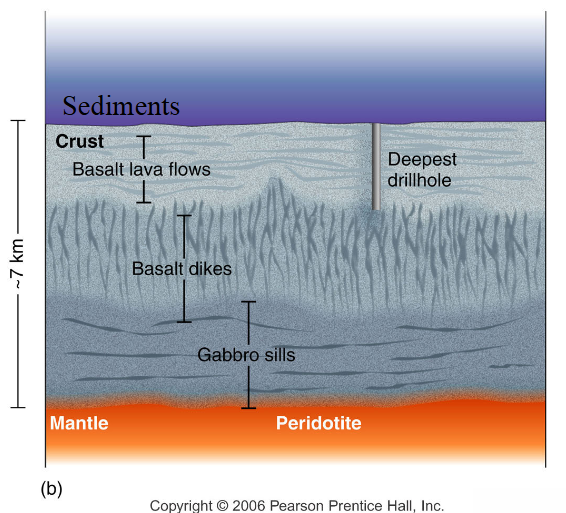
Continental Crust
Thicker: 20-90 km average ~35 km
Highly variable composition
Average ~ granodiorite/ andesite
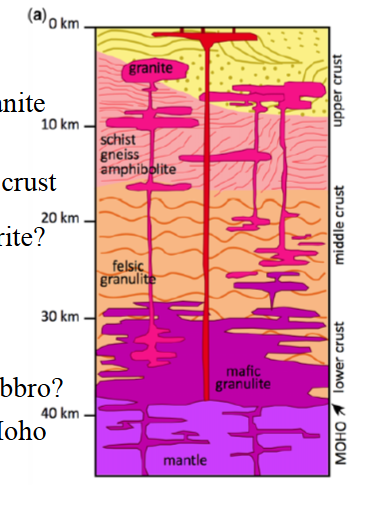
How do geologists know about rocks in Earth's interior?
Volcanoes ejected these xenoliths of high-pressure rocks; green ultramafic peridotite coated with basalt, and banded gneissic metamorphic fragment. Both indicate formation at depth.
Also inferences from Meteorites –irons and stones
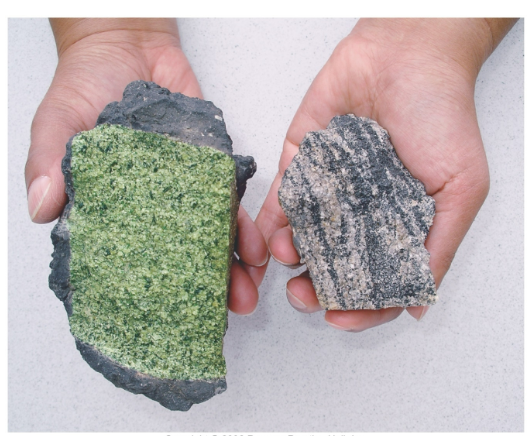
Peridotites
Samples of the upper mantle
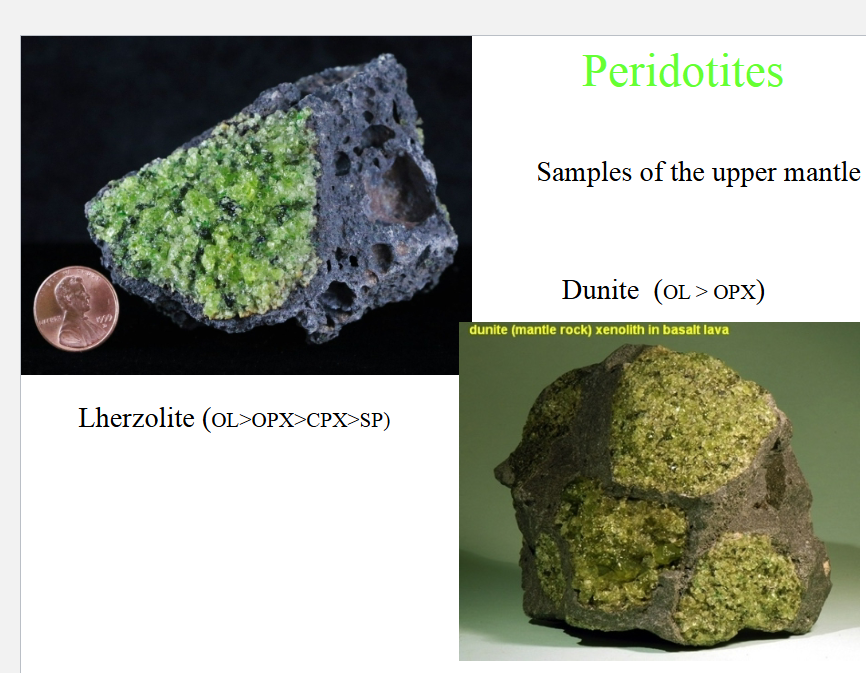
Seismic structure of Earth
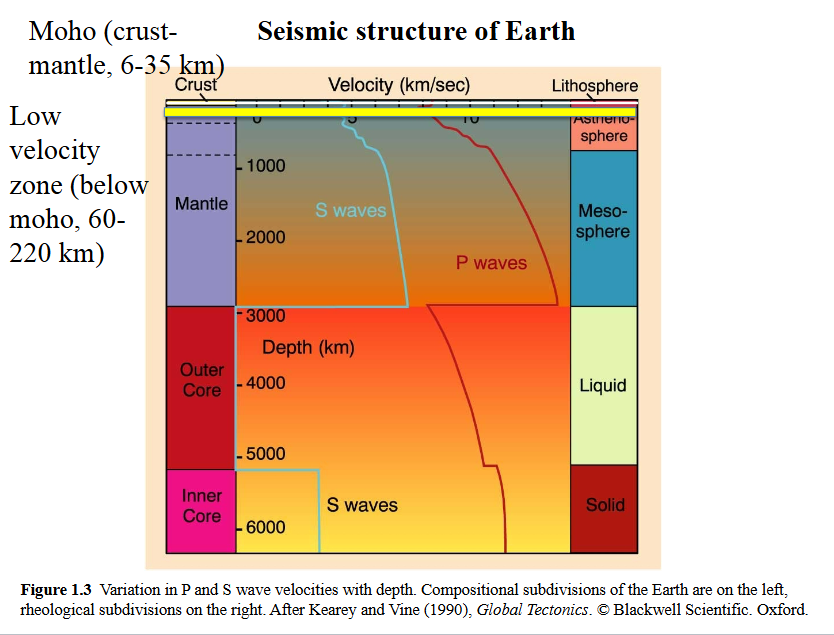
Mantle
Peridotite (ultramafic)
Upper to 410 km where olivine → spinel structure
-Low Velocity Layer 60-220 km (max)
Asthenosphere
Transition Zone as velocity increases ~ rapidly
-660 spinel structure → perovskite-type
-SiIV -→SiVI
Lower Mantle (Mesosphere) has more gradual velocity increase
The Earth’s Interior: Core
Core:
Fe-Ni metallic alloy (+ S, Si)
Outer Core is liquid
-No S-waves
Inner Core is solid
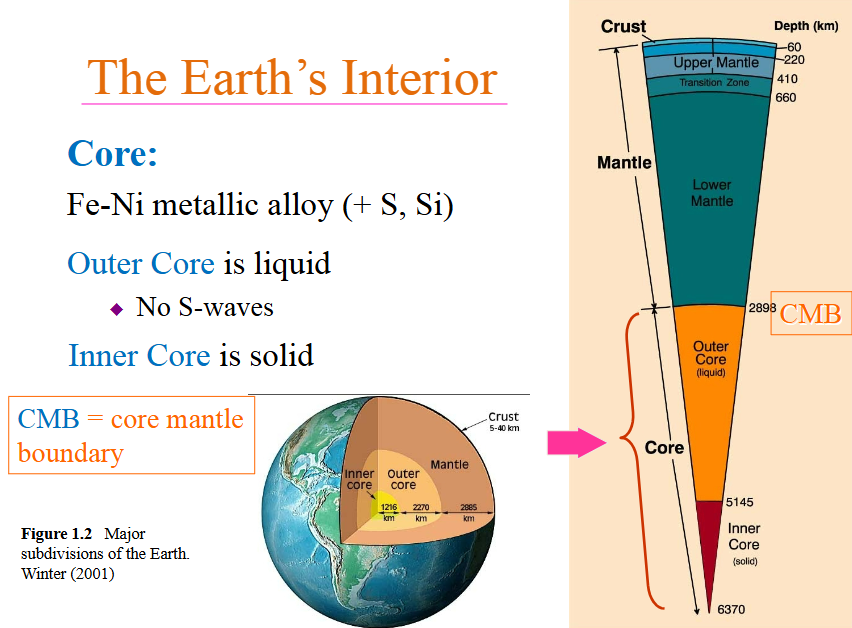
What composes the interior of Earth?
• Crystal-structure transformations of peridotite minerals at high temperature and pressure explain the abrupt increase in seismic velocity at about 410 and 660 km depth. The interval between is the transition zone between upper mantle (shallower than 410 km) and lower mantle (deeper than 660 km).
• The core is likely composed of iron or nickel-iron. The outer core is molten, and the inner core solid. The outer core must have ~10% lighter elements (O, S, Si, K, H) to match the calculated seismic velocities.
What composes the interior of Earth?: The core
The core:
– P- and S-wave behavior indicates a solid inner core and liquid outer core of much higher density than the mantle, most likely iron with lesser amounts of Ni, S and Si.
• Iron is the highest density of the common elements.
• Convecting Liquid iron can explain Earth’s magnetic field
• Some meteorites consist mostly of iron and appear likely analogs for planet cores

Types of Pressure
• Hydrostatic = caused by a column of water
– equal in all directions
– 1000 m = 100 atm = 100 bars=10 Mpa = 0.01 Gpa
– Gpa = 1000 Mpa
Lithostatic (geostatic) = Overburden Pressure is equal in all directions due to weight of overlying rock.
1Km = 30 Mpa in crust and 35 Mpa in the mantle
Near surface (crustal) – brittle rocks have directed stress and can have unequal stresses causing faulting and folding and flow at depth (deformation)
The Pressure Gradient
• P increases = Pgh
• Nearly linear through mantle (35MPa/km) In crust:.
– ~ 100 Mpa = 1Kb = 0.1Gpa = ~3.3 km
– = 1 Gpa (10Kb)/ 33 km (base of avg cont. crust)
– 1km =30 Mpa
• Core: P incr. more rapidly since alloy more dense
Heat Sources in the Earth
1. Heat from the early accretion and differentiation of the Earth (secular cooling with time)
2. Heat released by the radioactive breakdown of unstable nuclides (K, U, Th, Pb: mostly in crust)
3. Heat released due to crystallization of core
4. Increase in T due to compression
How hot is the interior of Earth?
Heat must be generated within Earth in order to account for its high internal temperature. This is due in part to radioactive decay of potassium, uranium, and thorium in silicate minerals. However, their abundances are not sufficient in the mantle and core to account for all of Earth’s internal heating. This missing heat is from crystallization of iron
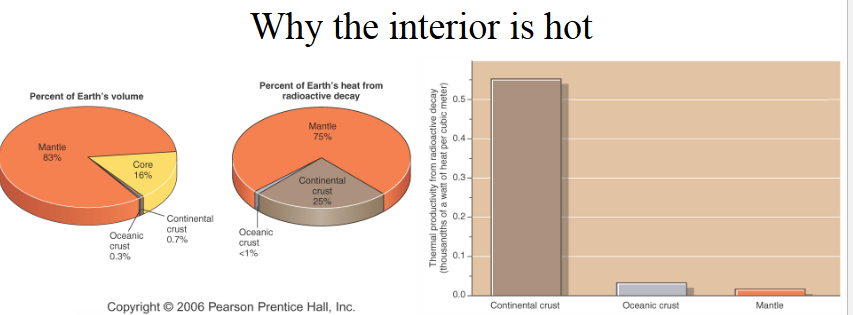
Temperature Increase at Depth
Rocks must heat up when pressure increases.
When any type of matter is compressed, the heat within is distributed over a smaller volume. So while the “amount” of heat is the same, there is more of it relative to the compressed size.
Pumping a bike tire increases the friction between the air molecules, which produces heat
Conversely, expanding gas cools (like an aerosol can spraying).
Note that generally silicate materials (Mantle) have low conduction
and a relatively low thermal expansion coefficient, but huge mass
facilitates convection (more later on mantle convection)
Heat Transfer